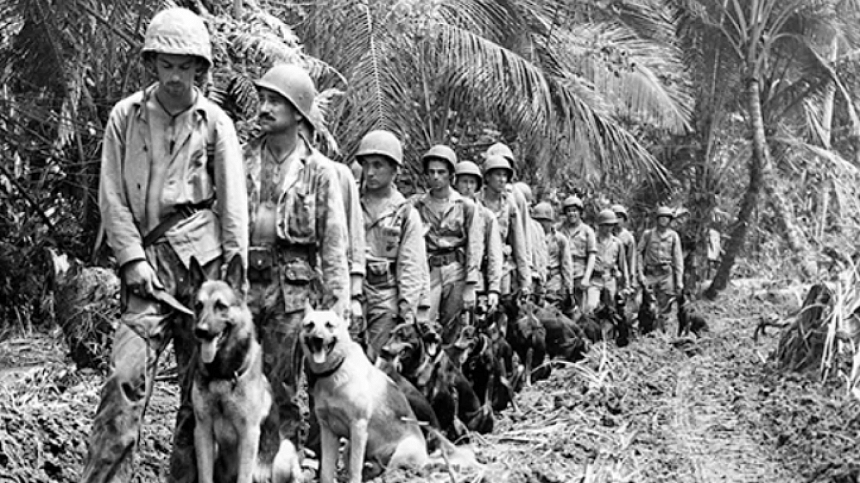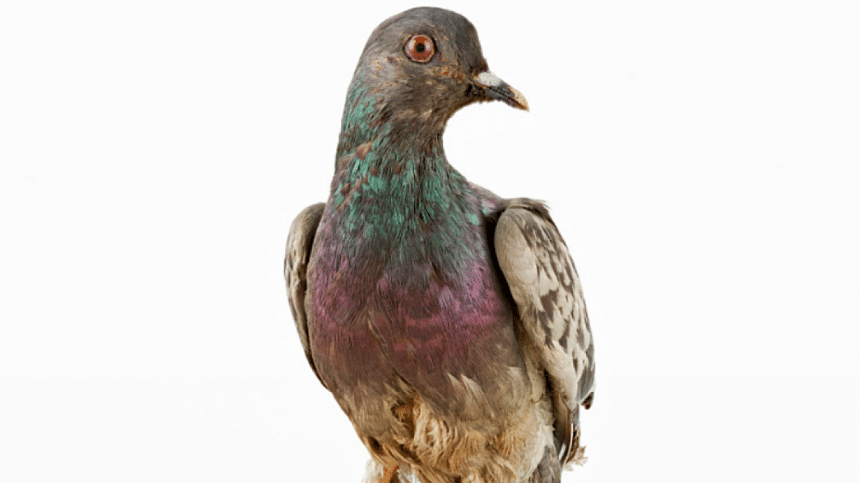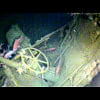Hooves, hounds, and heroes: Animal soldiers of World War I and II

It doesn't take a historian to tell you that the World Wars were tumultuous periods in human history. Marked by unprecedented global conflict, World War I and II are still recognised as two of the most significant and devastating wars ever, profoundly shaping the 20th century and the timeline to follow. However, amidst the chaos of the two wars, animals played crucial roles, serving as loyal companions, transporters, messengers, and even soldiers on the front lines. Let's take a look at how these unsung heroes made significant contributions to the war efforts during World War I and II.

Dogs
It comes with no surprise knowing that man's best friends were among the most versatile and indispensable animals during both wars. They served in various capacities, including messengers, sentinels, search and rescue, and even scouts. In World War I, messenger dogs carried important information across the treacherous battlefield, saving countless lives by facilitating communication between units.
World War II saw an expansion of the roles dogs played. War dogs were trained for sentry duty, alerting soldiers to approaching enemies, especially with the official formation of the US Army's K9 unit in 1942. Search and rescue dogs were employed to locate wounded soldiers, often in challenging environments. The Soviet Union, in particular, extensively used dogs trained to carry explosives to disable enemy tanks and German armoured vehicles.
Horses
Horses were an integral part of military operations during both World War I and II. In the early stages of World War I, cavalry units were still in use, but the trench warfare of the Western Front rendered them less effective. However, horses continued to play vital roles as transport animals, pulling artillery and supplies across challenging terrains.
During World War II, horses were again employed for logistical support in areas where mechanised vehicles struggled to navigate. In the harsh conditions of Eastern Europe and the Soviet Union, horses were crucial for transporting supplies and equipment, especially during the German invasion of the USSR. Mules, a close cousin of the horse, were also used in World War II, particularly trained in the US and shipped to the front lines to carry food, weapons, and oftentimes entire infantry units.

Pigeons
Known for their homing instincts, pigeons were used to carry messages across enemy lines when traditional communication methods were unreliable or impossible. Thousands of pigeons served as messengers, relaying critical information between military units.
One notable example is the story of Cher Ami, a homing pigeon used by the US Army Signal Corps during World War I. Cher Ami successfully delivered a critical message that saved the lives of nearly 200 soldiers despite being wounded in the process. The bird's bravery earned it the French Croix de Guerre medal.
Canaries
Canaries were used in coal mines to detect the presence of toxic gases. Their heightened sensitivity to carbon monoxide and other dangerous gases made them valuable for ensuring the safety of miners and, in some cases, military personnel working in underground environments.
The birds also served as living indicators of the air quality. If the canaries exhibited signs of distress or succumbed to the conditions, it signalled the need for immediate evacuation or the use of protective equipment by the human occupants.
Camels
Bikaner, now a city in Rajasthan, maintained the Bikaner Camel Corps, which participated in several important wars, notably achieving success in a camel cavalry charge during the Raid on the Suez Canal against Turkish forces. The unit also served in the Middle Eastern Sector during World War II.
In the deserts of North Africa during World War II, camels were also used for transport, carrying supplies and serving as beasts of burden. Their ability to endure harsh desert conditions made them well-suited for the region.
Elephants
While not as commonly associated with warfare, elephants played a role in logistics and transport, particularly in the challenging terrain of Southeast Asia. During World War II, elephants were used by both the Allies and the Axis powers to transport heavy equipment and supplies through dense jungles and mountainous regions, where traditional vehicles struggled.

Cats
Cats were not commonly employed in direct combat roles during World War I and II, unlike some other animals. However, they did often serve as mascots for military units, both on land and at sea. Soldiers and sailors would adopt cats as companions, providing a source of comfort and camaraderie during challenging times.
One notable real-life example of a companion cat during World War II is the story of Simon, a cat aboard the British Royal Navy's HMS Amethyst. The crew of the HMS Amethyst adopted him from Hong Kong, and he quickly became a beloved companion to the sailors. During the intense and challenging period of the 1949 Yangtze Incident, Simon provided comfort and companionship to the crew.
Despite being injured in the initial attack on the ship, Simon continued to fulfil his duties as a morale booster. He would visit the injured sailors in the makeshift sick bay and provide a sense of normalcy and comfort during the difficult times of the blockade. In the end, Simon the cat survived the incident and was awarded the Dickin Medal, the "animal's Victoria Cross", for his bravery and companionship.

 For all latest news, follow The Daily Star's Google News channel.
For all latest news, follow The Daily Star's Google News channel. 








Comments